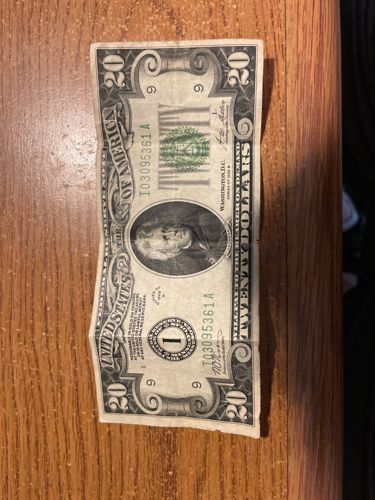Federal Reserve Note (20 Dollars)
Country of Origin: United States of America
Year of Issue: 1950 (Series year observed from the note)
Denomination: Twenty Dollars ($20)
Composition: 75% Cotton, 25% Linen (paper currency)

Brief Description
The note features a portrait of President Andrew Jackson on the front. Below the portrait, the series year (1950) is printed. The seal of the Federal Reserve Bank is on the left, next to the serial number. The Treasury seal is on the right. The words 'FEDERAL RESERVE NOTE' and 'THE UNITED STATES OF AMERICA' are prominently displayed. The denomination 'TWENTY DOLLARS' is at the bottom, and '20' is in all four corners. The back of the note typically features the White House.
Historical Significance
The 1950 series Federal Reserve Notes were part of the ongoing evolution of U.S. paper currency. This series marked a period of stability in currency design before more significant changes in security features were introduced in later decades. The portrait of Andrew Jackson has been a consistent feature on the $20 bill since 1914. These notes represent a common form of American currency from the mid-20th century, widely used in daily transactions and reflecting the economic landscape of the post-World War II era.
Estimated Value
Circulated 1950 series $20 bills are generally worth their face value ($20). Notes in uncirculated condition or with rare serial numbers (e.g., low numbers, solid numbers, star notes) can fetch a premium, potentially ranging from $30 to over $100, depending on condition and specific rarity.
Care Instructions
Handle the note by the edges to avoid transferring oils from your skin. Store in a cool, dry place, away from direct sunlight and humidity. Avoid folding, creasing, or writing on the note. Use archival-safe sleeves or holders for storage to protect against environmental damage.
Created At: 2025-08-28T18:08:31.714645